2,5-二羟基苯甲酸
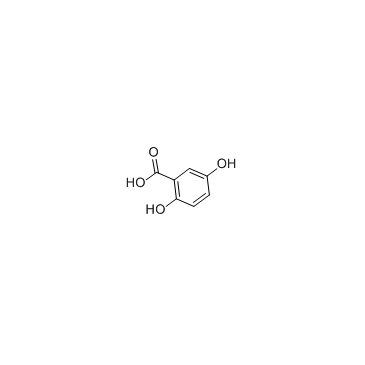
2,5-二羟基苯甲酸结构式

|
常用名 | 2,5-二羟基苯甲酸 | 英文名 | Gentisic acid |
|---|---|---|---|---|
| CAS号 | 490-79-9 | 分子量 | 154.120 | |
| 密度 | 1.6±0.1 g/cm3 | 沸点 | 406.9±35.0 °C at 760 mmHg | |
| 分子式 | C7H6O4 | 熔点 | 204-208 °C(lit.) | |
| MSDS | 中文版 美版 | 闪点 | 214.0±22.4 °C | |
| 符号 |

GHS07 |
信号词 | Warning |
2,5-二羟基苯甲酸用途2,5-Dihydroxybenzoic acid 是苯甲酸的代谢物,也是纤维母细胞生长因子 (fibroblast growth factor) 的强效抑制剂。 |
| 中文名 | 2,5-二羟基苯甲酸 |
|---|---|
| 英文名 | 2,5-dihydroxybenzoic acid |
| 中文别名 | 美沙拉嗪杂质G | 2.5-二羟基苯甲酸 | 龙胆酸,5-羟基水杨酸 | 龙胆酸 | 5-羟基水杨酸 |
| 英文别名 | 更多 |
| 描述 | 2,5-Dihydroxybenzoic acid 是苯甲酸的代谢物,也是纤维母细胞生长因子 (fibroblast growth factor) 的强效抑制剂。 |
|---|---|
| 相关类别 | |
| 靶点 |
Human Endogenous Metabolite Fibroblast growth factor |
| 体外研究 | 2,5-二羟基苯甲酸(龙胆酸)是苯甲酸的衍生物,是阿司匹林代谢分解的次要产物[1]。 2,5-二羟基苯甲酸也是许多传统酒和草药的组成部分,被选为成纤维细胞生长因子的有力抑制剂。 2,5-二羟基苯甲酸用作铅以鉴定具有更好抑制特性的其他化合物,产生新的化学成分的成纤维细胞生长因子抑制剂,其包括负责尿黑酸尿症的药剂。通过低分辨率和高分辨率方法,使用成纤维细胞生长因子家族的代表成员及其细胞受体,显示这类抑制剂可以采用两种不同的机制来干扰触发成纤维细胞生长因子驱动的信号复合物的组装。有丝分裂发生[2]。 |
| 体内研究 | 从体内疾病模型证实,这组抑制剂(例如,2,5-二羟基苯甲酸)可能对治疗癌症和血管生成依赖性疾病感兴趣[2]。 |
| 参考文献 |
[1]. Levy G, et al. Salicylate accumulation kinetics in man. N Engl J Med. 1972 Aug 31;287(9):430-2. |
| 密度 | 1.6±0.1 g/cm3 |
|---|---|
| 沸点 | 406.9±35.0 °C at 760 mmHg |
| 熔点 | 204-208 °C(lit.) |
| 分子式 | C7H6O4 |
| 分子量 | 154.120 |
| 闪点 | 214.0±22.4 °C |
| 精确质量 | 154.026611 |
| PSA | 77.76000 |
| LogP | 1.56 |
| 外观性状 | 白色至黄色粉末 |
| 蒸汽压 | 0.0±1.0 mmHg at 25°C |
| 折射率 | 1.671 |
| 储存条件 | 按规格使用和贮存,不会发生分解,避免与氧化物接触。 |
| 稳定性 | 1. 按规格使用和贮存,不会发生分解,避免与氧化物接触。 2. 存在于烤烟烟叶中。 |
| 水溶解性 | soluble |
| 分子结构 | 1、 摩尔折射率:36.94 2、 摩尔体积(cm3/mol):98.8 3、 等张比容(90.2K):299.4 4、 表面张力(dyne/cm):84.2 5、 极化率(10-24cm3):14.64 |
| 计算化学 | 1.疏水参数计算参考值(XlogP):无 2.氢键供体数量:3 3.氢键受体数量:4 4.可旋转化学键数量:1 5.互变异构体数量:9 6.拓扑分子极性表面积77.8 7.重原子数量:11 8.表面电荷:0 9.复杂度:157 10.同位素原子数量:0 11.确定原子立构中心数量:0 12.不确定原子立构中心数量:0 13.确定化学键立构中心数量:0 14.不确定化学键立构中心数量:0 15.共价键单元数量:1 |
| 更多 | 1. 性状:白色针状结晶 2. 密度(g/ m3,25/4℃):1.559 3. 相对蒸汽密度(g/cm3,空气=1):未确定 4. 熔点(ºC):199~200 5. 沸点(ºC,常压):406.9 6. 沸点(ºC,5.2kPa):未确定 7. 折射率:未确定 8. 闪点(ºC):214 9. 比旋光度(º):未确定 10. 自燃点或引燃温度(ºC):未确定 11. 蒸气压(kPa,25ºC):未确定 12. 饱和蒸气压(kPa,60ºC):未确定 13. 燃烧热(KJ/mol):未确定 14. 临界温度(ºC):未确定 15. 临界压力(KPa):未确定 16. 油水(辛醇/水)分配系数的对数值:未确定 17. 爆炸上限(%,V/V):未确定 18. 爆炸下限(%,V/V):未确定 19. 溶解性:溶于水、乙醇和乙醚,难溶于氯仿、苯和二硫化碳。 |
|
|||||||||||||||||||||||||||||||||||||||||||||||||||||||||||||||||||||||||||||||||||||||||||||||||||||||||||||||||||||||||||||||||||||||||||||||||||||||||||||||||||||||||||||||||||||||||||||||||||||||||||||||||||||||||||||||||||||||||||||||||||||||
|
2,5-二羟基苯甲酸毒理学数据: 1、急性毒性:大鼠经腹腔LD50:3gm/kg,除致死剂量外无详细说明; 小鼠经口LD50:4500mg/kg,除致死剂量外无详细说明; 小鼠经静脉LD50:374mg/kg,行为惊厥或癫痫; 2、生殖毒性:大鼠DOSE经皮下TDLo:雌性怀孕9天后:380mg/kgSEX/DURATION,影响胚胎的植入后死亡率。 大鼠DOSE经皮下TDLo:雌性怀孕11天后:642mg/kgSEX/DURATION,影响胚胎的植入后死亡率,具体的发育异常是肌肉骨骼系统。 3、致突变数据:DNA的inhibitionTEST系统:人类淋巴细胞,1mmol/L。 2,5-二羟基苯甲酸生态学数据: 总括注解 水危害级别1(德国规例)(通过名单进行自我评估)该物质对水是稍微危害的。 不要让未稀释或大量的产品接触地下水、水道或污水系统。 若无政府许可,勿将材料排入周围环境。 |
| 符号 |

GHS07 |
|---|---|
| 信号词 | Warning |
| 危害声明 | H302-H315-H319-H335 |
| 警示性声明 | P261-P305 + P351 + P338 |
| 个人防护装备 | dust mask type N95 (US);Eyeshields;Gloves |
| 危害码 (欧洲) | Xi:Irritant; |
| 风险声明 (欧洲) | R36/37/38 |
| 安全声明 (欧洲) | S26-S36-S37/39 |
| 危险品运输编码 | NONH for all modes of transport |
| WGK德国 | 3 |
| RTECS号 | LY3850000 |
| 海关编码 | 29182990 |
| 2,5-二羟基苯甲酸上游产品 10 | |
|---|---|
| 2,5-二羟基苯甲酸下游产品 10 | |
1. 由对苯二酚经羧基化而得。
2. 从水中得针晶。
3. 由氢酯制备。由过硫酸氧化水杨酸制备。
| 海关编码 | 2918290000 |
|---|---|
| 中文概述 | 2918290000 其他含酚基但不含其他含氧基羧酸及其酸酐、酰卤化物、过氧化物和过氧酸及它们的衍生物。监管条件:AB(入境货物通关单,出境货物通关单)。增值税率:17.0%。退税率:9.0%。最惠国关税:6.5%。普通关税:30.0% |
| 申报要素 | 品名, 成分含量, 用途 |
| 监管条件 | A.入境货物通关单 B.出境货物通关单 |
| 检验检疫 | R.进口食品卫生监督检验 S.出口食品卫生监督检验 |
| Summary | HS: 2918290000 other carboxylic acids with phenol function but without other oxygen function, their anhydrides, halides, peroxides, peroxyacids and their derivatives Tax rebate rate:9.0% Supervision conditions:AB(certificate of inspection for goods inward,certificate of inspection for goods outward) VAT:17.0% MFN tariff:6.5% General tariff:30.0% |
|
Structure and boosting activity of a starch-degrading lytic polysaccharide monooxygenase.
Nat. Commun. 6 , 5961, (2015) Lytic polysaccharide monooxygenases (LPMOs) are recently discovered enzymes that oxidatively deconstruct polysaccharides. LPMOs are fundamental in the effective utilization of these substrates by bact... |
|
|
Antimicrobial activity of natural products from the flora of Northern Ontario, Canada.
Pharm. Biol. 53(6) , 800-6, (2015) The number of multidrug resistant (MDR) microorganisms is increasing and the antimicrobial resistance expressed by these pathogens is generating a rising global health crisis. In fact, there are only ... |
|
|
Comparison of Mannose, Ethylene Glycol, and Methoxy-Terminated Diluents on Specificity and Selectivity of Electrochemical Peptide-Based Sensors.
Anal. Chem. 87 , 6966-73, (2015) We report the synthesis and application of three new antifouling diluents for the fabrication of an E-PB HIV sensor. Among the three thiolated antifouling diluents used in this study, the methoxy-term... |
| Benzoic acid,2,5-dihydroxy |
| Gentistic acid |
| Gensigon |
| 2,5-dihydroxyphenylcarboxylic acid |
| 2,5-DHBA,DHB,Gentisic acid |
| Gensigen |
| 2,5-Dihydroxybenzoic acid |
| Gentisate |
| 2,5-Dhba |
| Hydroquinonecarboxylic acid |
| Benzoic acid, 2,5-dihydroxy- |
| 2,5-dihydroxybenzoate |
| 5-Hydroxysalicylic acid |
| EINECS 207-718-5 |
| 2,5-Dioxybenzoic acid |
| 5-hydroxy-Salicylic acid |
| MFCD00002460 |
| 2,5-Dihydroxy-benzoic acid |
| gentisic acid |
| 3,6-Dihydroxybenzoic Acid |
| 2,5-dihydroxy benzoic acid |
| Carboxyhydroquinone |
| DHB |
| Mesalazine Impurity 7 |

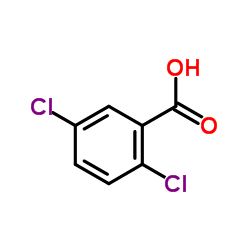 CAS号50-79-3
CAS号50-79-3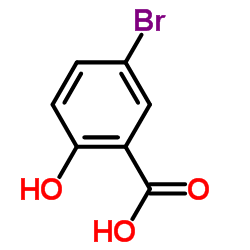 CAS号89-55-4
CAS号89-55-4 CAS号123-31-9
CAS号123-31-9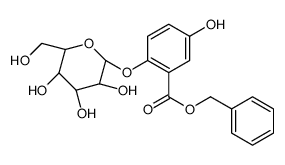 CAS号10590-85-9
CAS号10590-85-9 CAS号69-72-7
CAS号69-72-7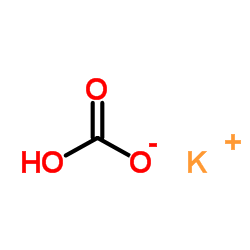 CAS号298-14-6
CAS号298-14-6 CAS号2785-98-0
CAS号2785-98-0 CAS号2612-02-4
CAS号2612-02-4 CAS号65-85-0
CAS号65-85-0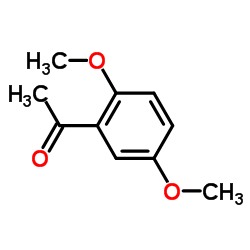 CAS号1201-38-3
CAS号1201-38-3 CAS号1084-96-4
CAS号1084-96-4 CAS号2150-41-6
CAS号2150-41-6 CAS号606-45-1
CAS号606-45-1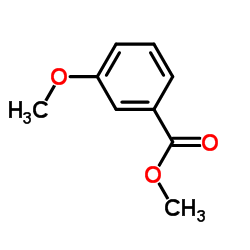 CAS号5368-81-0
CAS号5368-81-0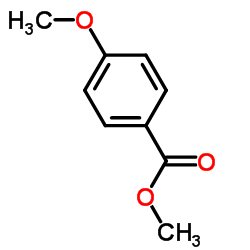 CAS号121-98-2
CAS号121-98-2 CAS号2150-38-1
CAS号2150-38-1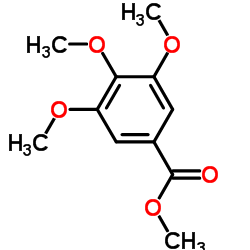 CAS号1916-07-0
CAS号1916-07-0 CAS号2150-42-7
CAS号2150-42-7 CAS号2150-40-5
CAS号2150-40-5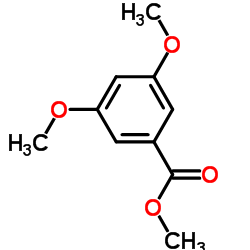 CAS号2150-37-0
CAS号2150-37-0
